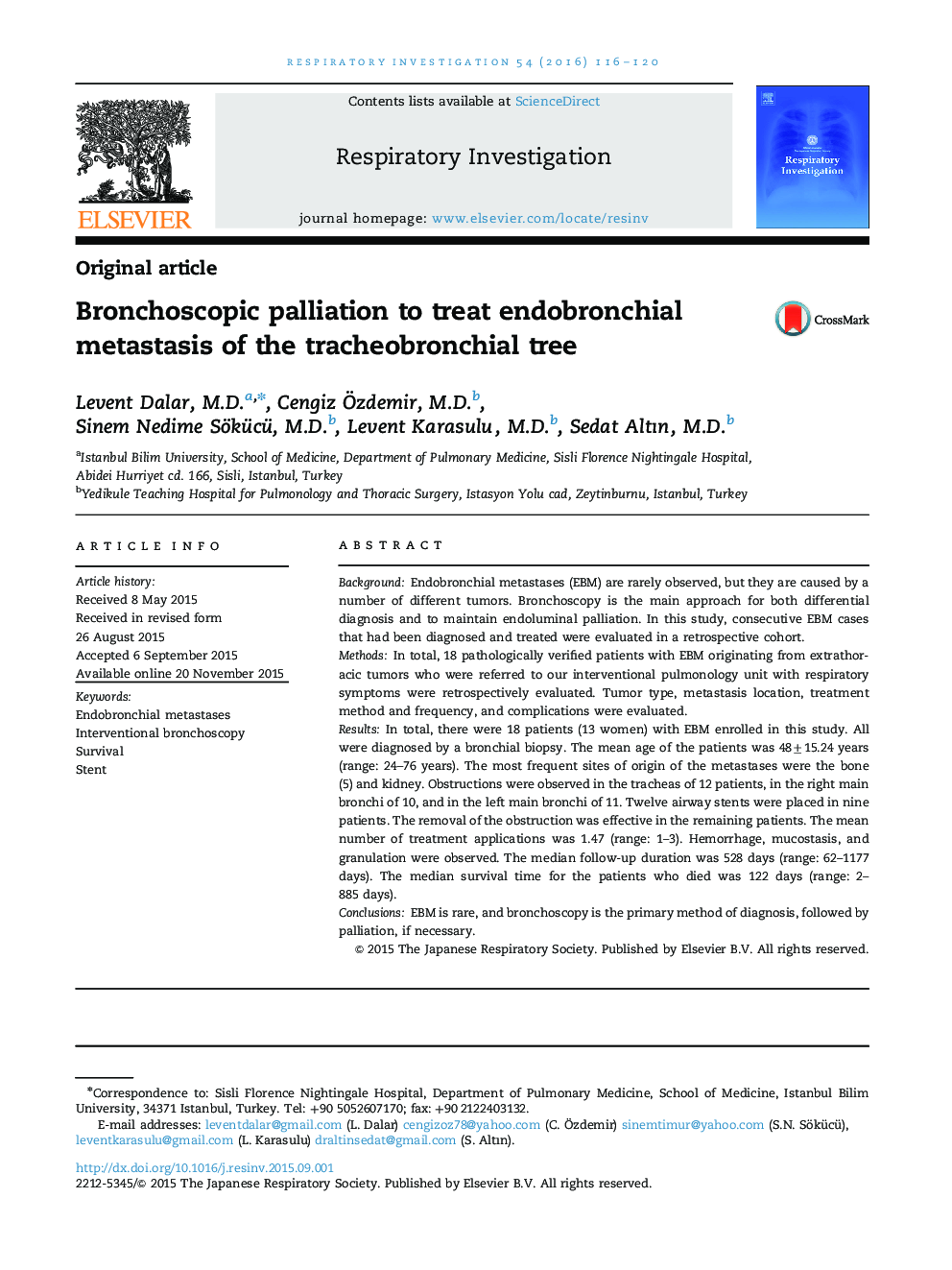| Article ID | Journal | Published Year | Pages | File Type |
|---|---|---|---|---|
| 3418554 | Respiratory Investigation | 2016 | 5 Pages |
BackgroundEndobronchial metastases (EBM) are rarely observed, but they are caused by a number of different tumors. Bronchoscopy is the main approach for both differential diagnosis and to maintain endoluminal palliation. In this study, consecutive EBM cases that had been diagnosed and treated were evaluated in a retrospective cohort.MethodsIn total, 18 pathologically verified patients with EBM originating from extrathoracic tumors who were referred to our interventional pulmonology unit with respiratory symptoms were retrospectively evaluated. Tumor type, metastasis location, treatment method and frequency, and complications were evaluated.ResultsIn total, there were 18 patients (13 women) with EBM enrolled in this study. All were diagnosed by a bronchial biopsy. The mean age of the patients was 48±15.24 years (range: 24–76 years). The most frequent sites of origin of the metastases were the bone (5) and kidney. Obstructions were observed in the tracheas of 12 patients, in the right main bronchi of 10, and in the left main bronchi of 11. Twelve airway stents were placed in nine patients. The removal of the obstruction was effective in the remaining patients. The mean number of treatment applications was 1.47 (range: 1–3). Hemorrhage, mucostasis, and granulation were observed. The median follow-up duration was 528 days (range: 62–1177 days). The median survival time for the patients who died was 122 days (range: 2–885 days).ConclusionsEBM is rare, and bronchoscopy is the primary method of diagnosis, followed by palliation, if necessary.
